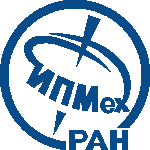
|
ИСТИНА |
Войти в систему Регистрация |
ИПМех РАН |
||
Red and blue light in antitumor photodynamic therapy with chlorin-based photosensitizers: a comparative animal study assisted by optical imaging modalitiesстатья
Статья опубликована в высокорейтинговом журнале
Статья опубликована в журнале из списка Web of Science и/или Scopus
Дата последнего поиска статьи во внешних источниках: 15 декабря 2021 г.
- Авторы: Kirillin Mikhail, Kurakina Daria, Khilov Aleksandr, Orlova Anna, Shakhova Maria, Orlinskaya Natalia, Sergeeva Ekaterina
- Журнал: Biomedical optics express
- Том: 12
- Номер: 2
- Год издания: 2021
- Издательство: Optical Society of America
- Местоположение издательства: United States
- Первая страница: 872
- Последняя страница: 892
- DOI: 10.1364/BOE.411518
- Аннотация: The goal of this study is a comparative analysis of the efficiency of the PDT protocols for CT26 tumor model treatment in Balb/c mice employing red and blue light with both topical and intravenous administration of chlorin-based photosensitizers (PSs). The considered protocols include the doses of 250 J/cm2 delivered at 660 nm, 200 J/cm2 delivered at 405 nm, and 250 J/cm2 delivered at both wavelengths with equal energy density contribution. Dual-wavelength fluorescence imaging was employed to estimate both photobleaching efficiency, typical photobleaching rates and the procedure impact depth, while optical coherence tomography with angiography modality (OCT-A) was employed to monitor the tumor vasculature response for up to 7 days after the procedure with subsequent histology inspection. Red light or dual-wavelength PDT regimes with intravenous PS injection were demonstrated to provide the most pronounced tumor response among all the considered cases. On the contrary, blue light regimes were demonstrated to be most efficient among topical application and irradiation only regimes. Tumor size dynamics for different groups is in good agreement with the tumor response predictions based on OCT-A taken in 24h after exposure and the results of histology analysis performed in 7 days after the exposure.
- Добавил в систему: Сергеева Екатерина Александровна